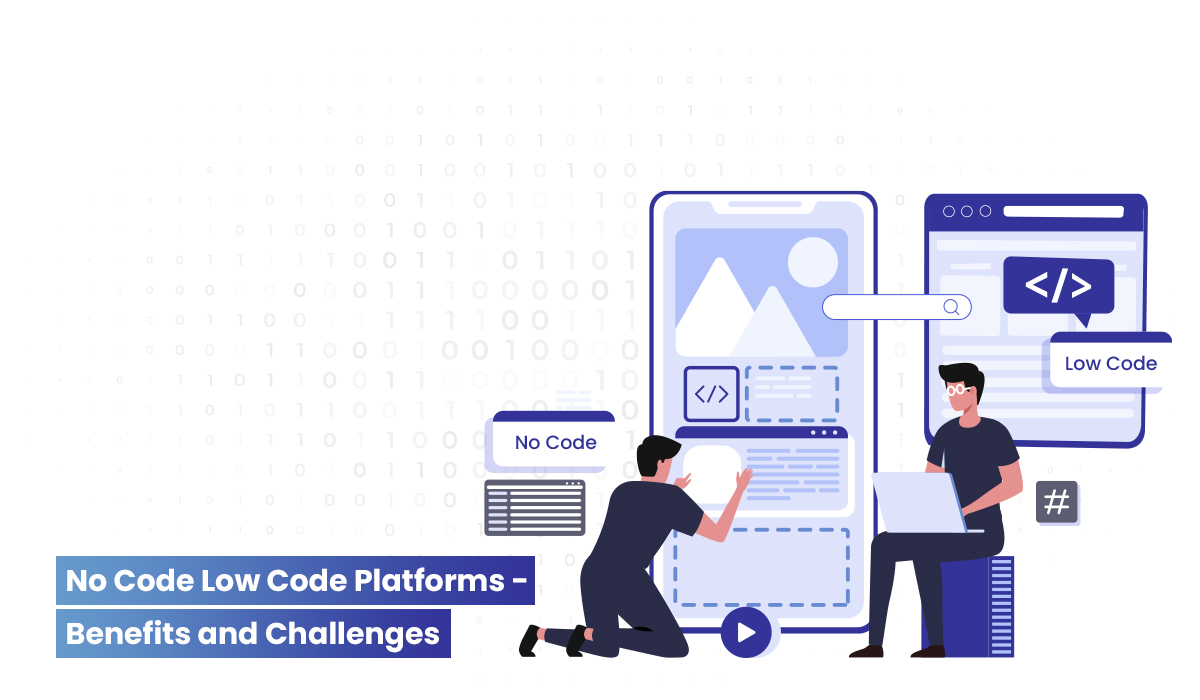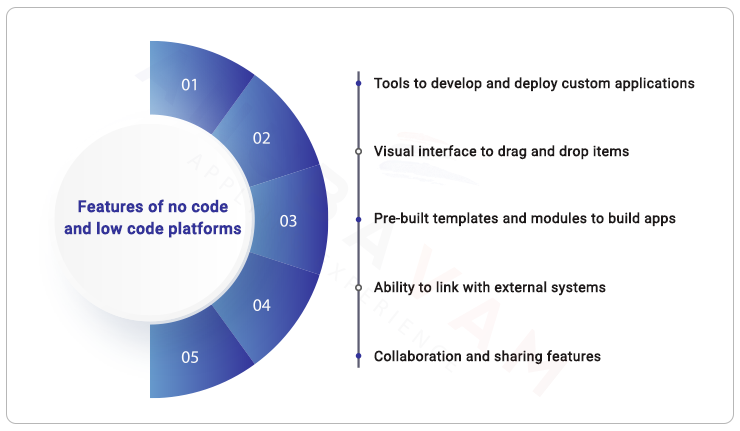
A quick overview of the benefits and challenges of low code no code platforms 2023
In recent years, no-code and low-code platforms have gained popularity as a means for enterprises to rapidly design and deploy unique applications without the need for traditional coding. These platforms have a visual interface and come with templates and modules that users can use to build their own apps by dragging and dropping objects and linking them. Let’s explore the benefits of low code no code platforms in this post.
A peep into the low code no code platform trend
The increasing desire for digital transformation is one of the primary trends driving the use of low code no code platforms. The democratization of technology and the need for businesses to be more flexible and quick in today's fast-paced business world have both contributed to this trend.

One of the best things about no-code and low-code platforms is that they can speed up the development process. No code and low code platforms enable non-technical users to create custom apps in a matter of days or even hours, whereas traditional coding can be time-consuming and require specialized knowledge. This not only saves time but also enables firms to be more adaptable and responsive to shifting business requirements.
In addition to their speed and user-friendliness, no-code and low-code systems are frequently less expensive than traditional coding. By getting rid of the need for technical experts and speeding up the development process, businesses can cut down on development costs and use the money elsewhere.
The features of no code and low code platforms: Simplifying custom App development and deployment

- No code low code platforms offer a range of features that make it easier for organizations to develop and deploy custom applications without the need for traditional coding.
- No code low code platforms have a visual interface that lets you drag and drop items to build your own apps. Non-technical users can design unique apps without coding knowledge.
- No code low code platforms come with pre-built templates and modules that users can tweak and use as a starting point for their apps. This saves time and speeds up development.
- Many no-code low-code platforms can be linked with external systems, such as databases and APIs, allowing users to construct unique applications that can access and alter data from multiple sources.
- No code and low code systems commonly feature collaboration and sharing. This is helpful when numerous users are working on the same application or when developers need to share their work with non-technical stakeholders.
The growing demand for no-code and low-code platforms
One of the main reasons for this growth is the growing need for digital transformation and the need for organizations to be more agile and quick to change.
As companies try to modernize their operations and adopt new technologies, they are turning to low-code and no-code platforms to quickly and easily build custom applications that can automate processes, make them more efficient, and drive innovation.
The market for low-code and no-code platforms is being driven by the rise of citizen developers or non-technical employees who can use these platforms to build custom apps and automate processes within their organization.
Overcoming the challenges of no code and low code platforms: Scalability and security
Despite their numerous advantages, no code and low code systems present certain obstacles which include;
- The scalability and security of applications built on these platforms are a primary concern.
- Some users have voiced worry that apps developed on no-code and low-code platforms may not be as robust as those developed using traditional coding, and may not be able to handle the same volume of traffic or data.
However, many of the leading no-code and low-code platforms have addressed these concerns
- Incorporating robust security mechanisms and scalable infrastructure to enable the expansion of applications.
- As technology continues to develop, these platforms will become even more trustworthy and secure.
Conclusion
- No code low code platforms are becoming increasingly attractive options for enterprises seeking to develop unique apps rapidly and without much effort.
- Whether for digital transformation, process automation, or the creation of internal tools, these platforms provide a variety of advantages, including speed, usability, and cost-efficiency.
- We should expect no code and low code platforms to play an ever larger part in the world of technology as technology continues to advance.
